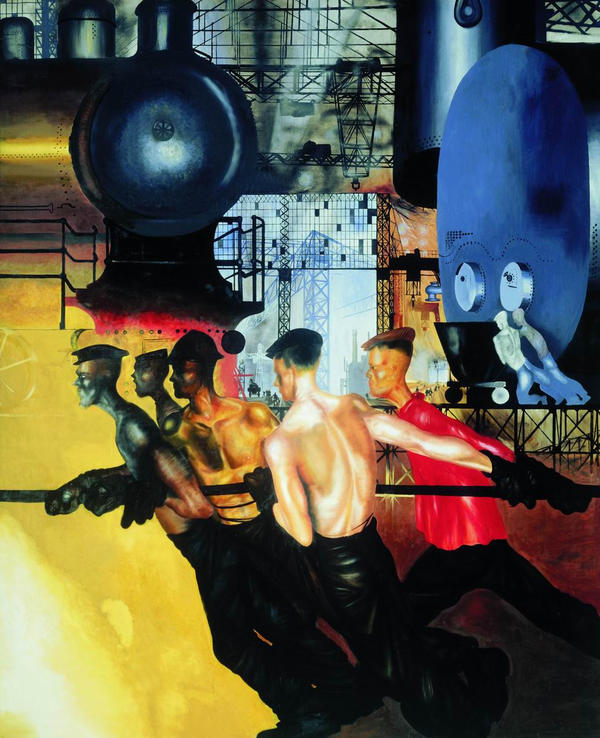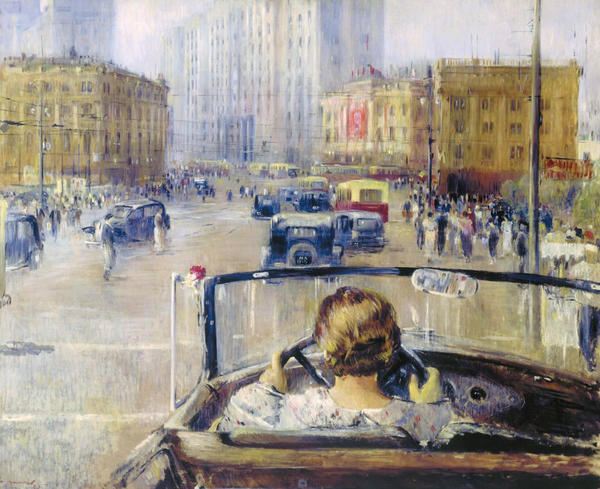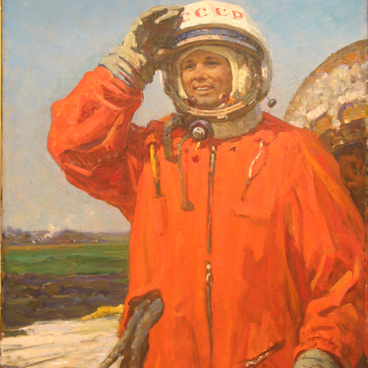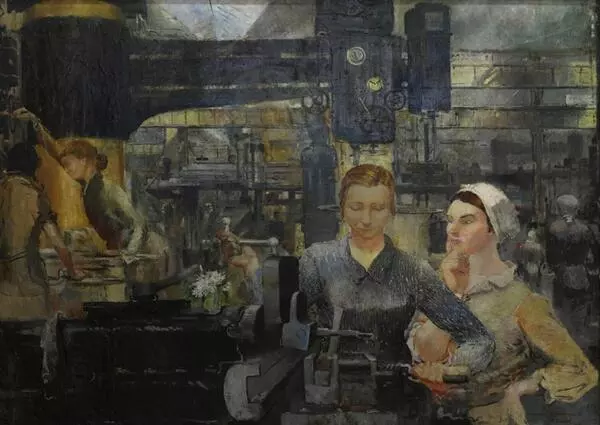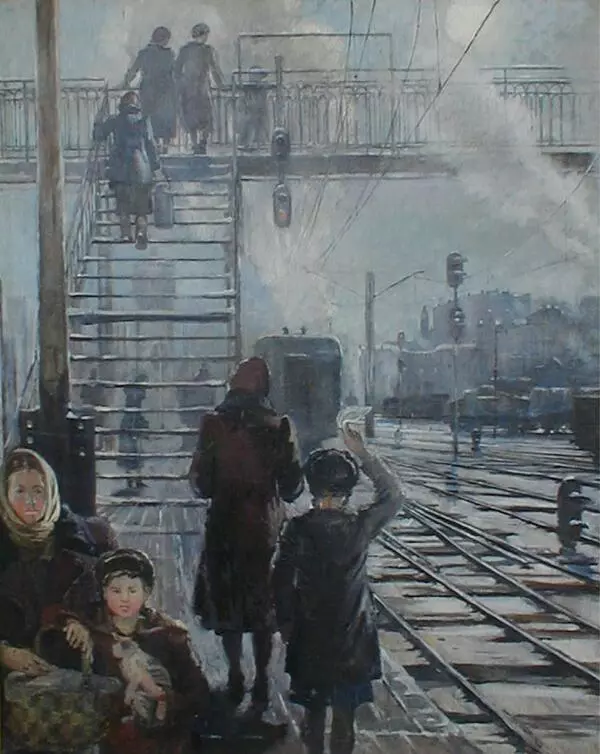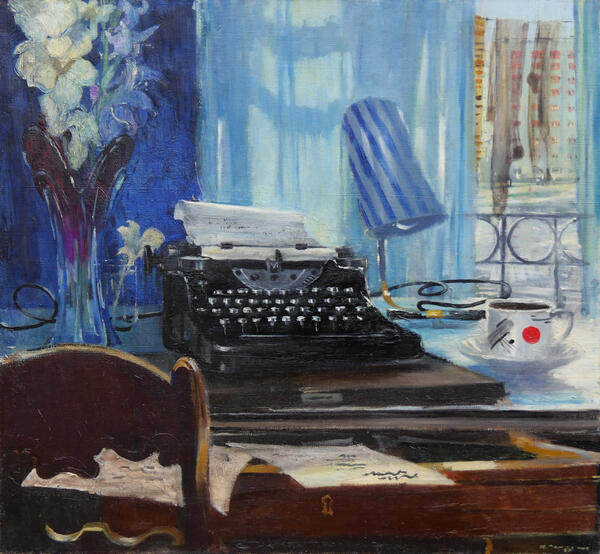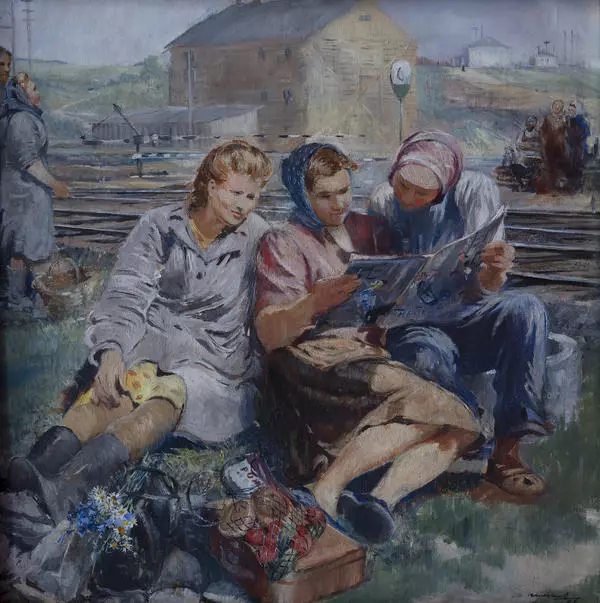Artist Yuri Pimenov painted New Year in 1949. Its central character is a man in a military uniform standing at the table with a glass in his hand. The painting was created just four years after the end of the Great Patriotic War. At those times, many Soviet men still wore soldier´s shirts and breeches.
#1

Yuri Pimenov
New Year
#2
#18
Besides paintings, Pimenov created stage sets and posters for films. That is why, in his paintings, he often applied the principles of compositions used in filmmaking and theatre. The foreground of the New Year is filled by a kind of proscenium: a dim entrance hall where we can see overcoats and fur coats on the rail, shoes, and a bag with tangerines on a cabinet.
#19
The open doors that lead from the entrance hall to the room look like theatre curtains. The scene where the main action is set is the room where the guests are sitting at the festive table. The room is brightly lit, and the people are smiling.
#20
Yuri Pimenov painted the minor details with great care. The shoes under the rail are in disorder: it looks like the guests have been taking them off hastily in order not to bother each other in the small entrance hall. The tangerines are on a cabinet beside the telephone: they seem to have been forgotten in the hustle of the holidays. The chairs around the table are different from each other: they probably have been gathered from different rooms of the apartment or borrowed from neighbours to help all the guests sit at the table. The hands of the clock show that the time is close to the midnight: only few minutes are left till the New Year.
#21
Yuri Pimenov became interested in painting when he was studying at a high school. He entered the Zamoskvoretskaya Art School. He was inspired by Impressionists: Claude Monet, August Renoir, Edgar Degas. However, his favorite painting was Savrasov’s The Rooks Have Come Back.
#22
Yuri Pimenov’s early works of the 1920-1930s were characterized by clear geometrical lines and dark colours. In that style, he painted the works Heavy Industry Now! , We Are Building Socialism, The Races. His paintings of that period are characterized by features of German Expressionism: bright contrasting colours, curved lines, wide and rapid strokes of the brush.
#23
Yuri Pimenov. Heavy Industry Now! 1927.
#6
In the 1930s, Pimenov’s style changed. He switched to lyrical and elegant art in the style of French impressionism. The strokes of his brush became smooth and semi-transparent, the colours became light and soft, and he started using blurred backgrounds typical for his style. Views of Moscow and scenes from everyday life of the city dwellers became his favourite subjects.
#10
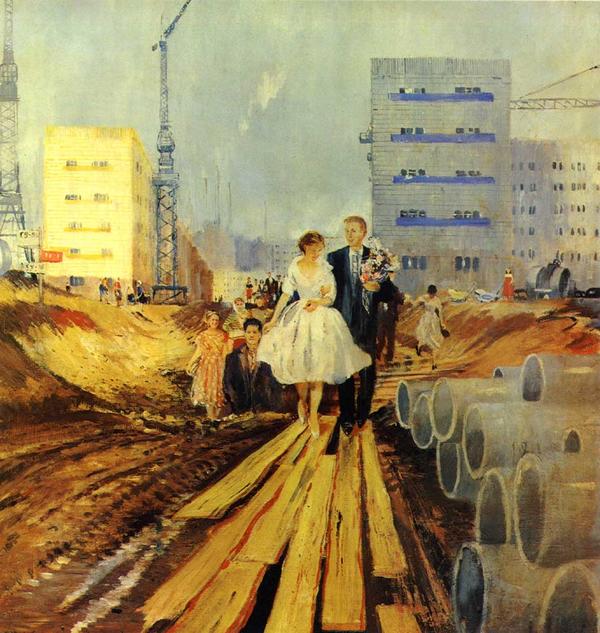
Yuri Pimenov. A Wedding in Tomorrow’s Street. 1962.
#24
In 1937, Pimenov created one of his most famous paintings, The New Moscow. That was how artist Ivan Dolgopolov described the painting in his book Masters and Masterpieces:
‘The whole Pimenov’s painting is filled with passion for life. You can feel it in the red and white carnation flowers attached to the frame of the windshield, in the glistening pavement and in the trembling red bannerols on the Hall of Columns of the House of Unions, in the patches of sunlight on the polished trunks of the cars and in the colorful mosaic of the crowd of pedestrians… The magic of Pimenov’s painting is in the movement that pervades every brush stroke’.
#25
Yuri Pimenov. The New Moscow. 1937.
#26
Belgorod State Art Museum
read morehide
00:00
00:00
1x
New Year
Creation period
1949
Dimensions
70x90 cm
Technique
oil on canvas
Collection
Exhibition
6
Open in app
Share

